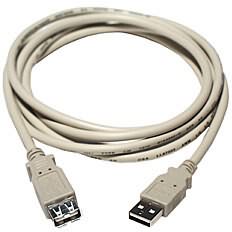Electromagnetic emissions of USB cables
USB ( Universal Serial Bus ) is a communication system widely used in computers and other devices. It has many advantages respect to the previous systems, it is faster, simpler, more robust, etc... Unfortunately for us it has also much more electromagnetic emissions.

The typical USB cables, for USB 1.1 or USB 2.0 systems, have a very light shielding inside, and so when the devices connected through the cable are working there are lots of electromagnetic emissions from the cable.
These cables emit an electromagnetic field of middle-high frequency, according to the communication speed of the devices. When they are used at the maximum speed, which is 480 Mbps for USB 2.0, they emit a radiation very akin to that of GSM cell phones.
We tried to find better USB cables in commerce but we didn't find them, it seems that the industries apply just the minimum shielding that is needed by the USB devices to communicate without too many errors. Longer cables, of 5 meters up, are made with a better shielding, because the longer the cable the lower the signal received by the device connected to it, but there are also products with the same shielding of the short cables.
A much better solution would be an optical cable, there are some USB adapters that use fiber optics instead of copper wires, but they are excessively expensive. Furthermore, fiber-optic USB needs special converters at the ends of the cable, and these converters may create a lot of electromagnetic radiation, like USB hubs.
We haven't tried any USB 3.0 device yet, but we suppose that USB 3 cables have more electromagnetic radiation than USB 2, and that their radiation is of a higher frequency band.